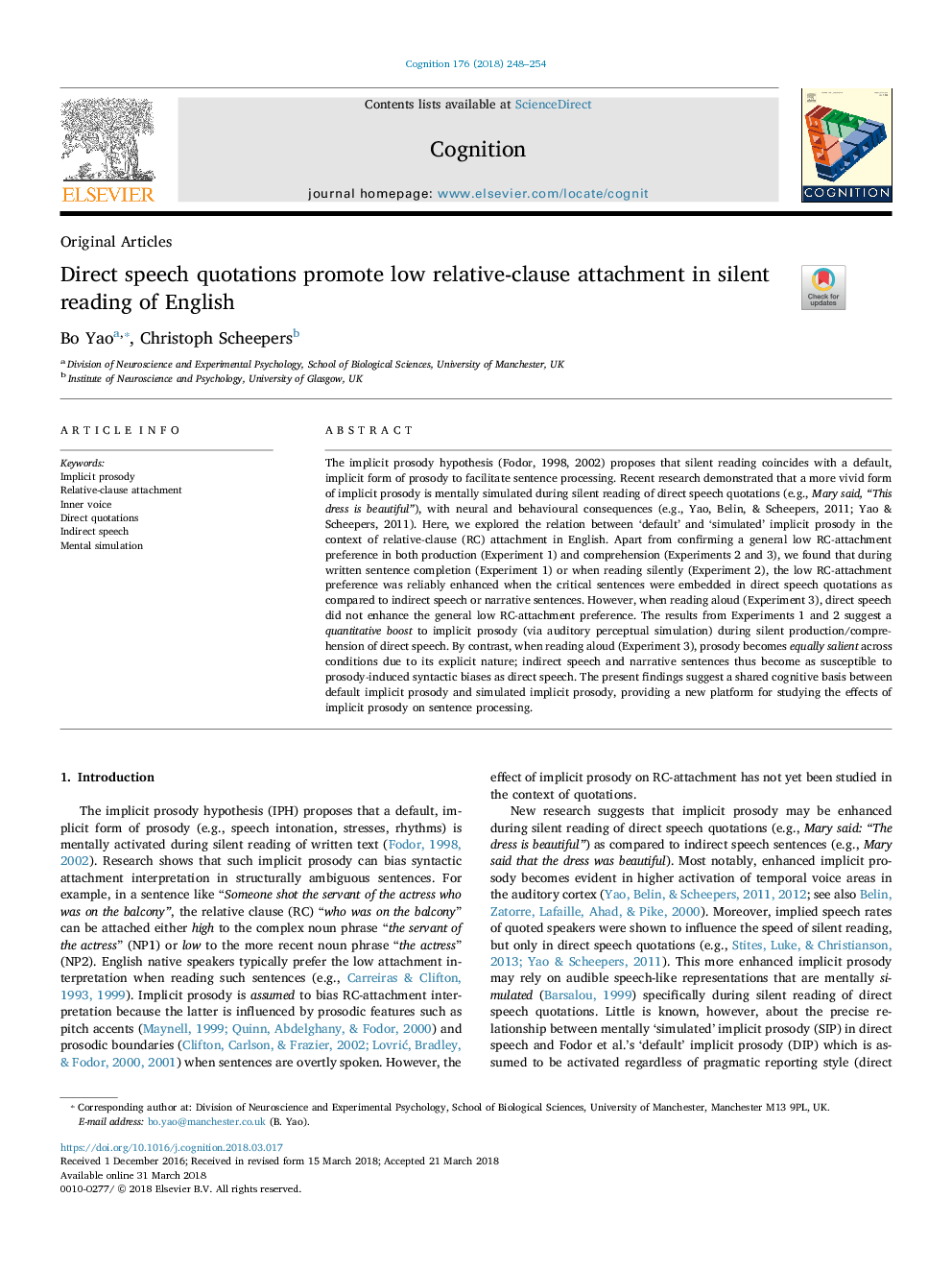ترجمه فارسی عنوان مقاله
نقل قول های گفتاری مستقیم تضمین پیوند نسبی کم در خواندن خاموش انگلیسی است
عنوان انگلیسی
Direct speech quotations promote low relative-clause attachment in silent reading of English
| کد مقاله | سال انتشار | تعداد صفحات مقاله انگلیسی |
|---|---|---|
| 128606 | 2018 | 7 صفحه PDF |
منبع

Publisher : Elsevier - Science Direct (الزویر - ساینس دایرکت)
Journal : Cognition, Volume 176, July 2018, Pages 248-254
ترجمه کلمات کلیدی
مستند ظاهری، رابطه دلبستگی نسبی، صدای درونی، نقل قول مستقیم سخنرانی غیر مستقیم، شبیه سازی ذهنی،
کلمات کلیدی انگلیسی
Implicit prosody; Relative-clause attachment; Inner voice; Direct quotations; Indirect speech; Mental simulation;

